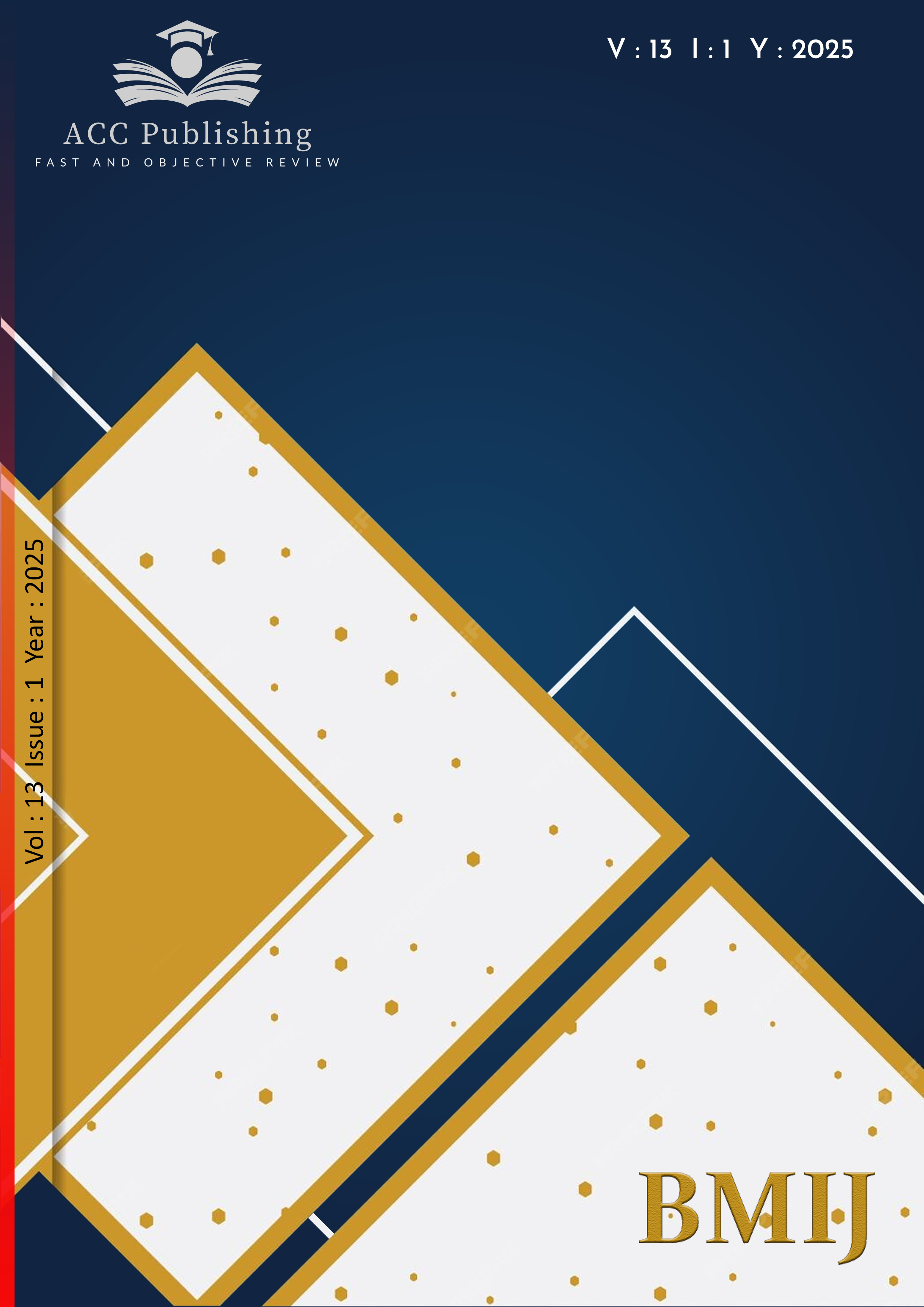
Published 2025-03-25
Keywords
- Organizational Gaslighting, Gaslighting, Scale Development, Validity, Reliability
- Örgütsel Gaslighting , Gaslighting, Ölçek Geliştirme, Geçerlilik, Güvenirlik
How to Cite
Copyright (c) 2025 Mesut Öztırak

This work is licensed under a Creative Commons Attribution-NonCommercial-NoDerivatives 4.0 International License.
How to Cite
Abstract
The objective of this study was to create a valid and reliable tool to assess the occurrence of gaslighting in organisational settings. Organisational gaslighting is characterised by psychological manipulation and deceitful actions aimed at causing individuals or groups to question their perception of reality, often resulting in emotional abuse within the workplace. These behaviours undermine the victim's confidence and convince them they are incorrect. The study followed a three-phase scale development procedure. Initially, in-depth interviews were conducted, and a pool of 24 items was generated through content analysis. The second phase involved gathering expert feedback on the items, ensuring meaning, face, and scope validity, and refining the scale. The third phase led to the creation of a 10-item draft scale based on evaluations from the previous steps. Two distinct sample groups were identified for this phase: the first group participated in a pilot study with data collected online and in-person surveys. The pilot study involved 176 individuals from the health sector. The final version of the scale was tested on a sample of 408 individuals employed in the education sector. Following statistical analysis, the organisational gaslighting scale was reduced to 8 items. Confirmatory factor analysis (CFA) of the scale's structure confirmed the presence of two key dimensions—trivialisation and abuse—and showed acceptable fit levels. The CFA results affirmed the structural integrity of the scale. The Cronbach's Alpha coefficient was calculated at 0.800, verifying the scale's reliability. This newly developed scale is anticipated to be widely applicable across various sectors for measuring gaslighting in organisational environments.
References
- Atta, M. H. R., Waheed Elzohairy, N., Abd Elaleem, A. E. D. M. H., Othman, A. A., Hamzaa, H. G., El‐Sayed, A. A. I., & Zoromba, M. A. (2024). Comprehending The Disruptive Influence Of Workplace Gaslighting Behaviours And Mobbing On Nurses' Career Entrenchment: A Multi‐Centre İnquiry. Journal Of Advanced Nursing. Https://Doi.Org/10.1111/Jon.13165
- Aurangzeb, W., Abbasi, M. N. S., & Kashan, S. (2023). Unveiling The Impact Of Gaslighting On Female Academic Leadership: A Qualitative Phenomenological Study. Contemporary Issues İn Social Sciences And Management Practices, 2(3), 1-15.
- Aydın, S. Ö., Azizoğlu, N., & Yılmaz, F. B. (2023). Designing Active Learning Enriched Biotechnology Instruction Module (BIM) For Middle School Science Course. Elementary School Forum (Mimbar Sekolah Dasar), 10(1), 34-62.
- Başkale, H. (2016). Nitel Araştırmalarda Geçerlik, Güvenirlilik ve Örneklem Büyüklüğünün Belirlenmesi. Dokuz Eylül Üniversitesi Hemşirelik Fakültesi Elektronik Dergisi, 9(1), 23-28. Https://Dergipark.Org.Tr/Tr/Pub/Deuhfed/İssue/46796/586804
- Bayram, V., & Öztırak, M. (2023). Yeşil İş Etiği: Bir Ölçek Geliştirme Çalışması. JOEEP: Journal Of Emerging Economies And Policy, 8(2), 124-135. Https://Doi.Org/10.54618/Joeep.2023.8.2.005
- Büyükoztürk, Ş. (2007). Veri Analizi El Kitabı (8. Baskı). Pegem Ak Yayıncılık.
- Büyüköztürk, Ş. (2011). Sosyal Bilimler İçin Veri Analizi El Kitabı (14th Ed.). PEGEM Akademi.
- Clark, C. M. (2024). Navigating The Challenging Complexities Of Gaslighting In Nursing Academy. Teaching And Learning İn Nursing, 19(2), 113-118. Https://Doi.Org/10.1016/J.Teln.2023.11.001
- Çalışkan, A. (2022). Örgütsel Değişime Açıklık: Bir Ölçek Geliştirme Çalışması. Aksaray Üniversitesi İktisadi ve İdari Bilimler Fakültesi Dergisi, 14(2), 191-202. Https://Doi.Org/10.52791/Aksarayiibd.1069524
- Çokluk, Ö., Şekercioğlu, G., & Büyüköztürk, Ş. (2010). Sosyal Bilimler İçin Çok Değişkenli İstatistik. PEGEM Yayınları.
- Davis, A. M., & Ernst, R. (2020). Racial Gaslighting. In The Politics of Protest (Pp. 47-60). Routledge.
- Demir, K., & Akpınar, E. (2016). Mobil Öğrenmeye Yönelik Tutum Ölçeği Geliştirme Çalışması. Eğitim Teknolojisi Kuram Ve Uygulama, 6(1), 59-79. Https://Doi.Org/10.17943/Etku.83341
- Devellis, R. F., Correia, H., & Cella, D. (2014). New English And Spanish Social Health Measures Will Facilitate Evaluating Health Determinants. Health Psychology, 33(5), 490. Https://Doi.Org/10.1037/Hea0000025
- Digiulio, S. (2018). What Is Gaslighting? And How Do You Know If It's Happening To You. NBC News.
- Farid, H., Zhang, Y., Tian, M., & Lu, S. (2024). Unmasking The İnterplay Between Gaslighting And Job Embeddedness: The Critical Roles Of Coworker Support And Work Motivation. Journal Of Management & Organization, 1-18. Https://Doi.Org/10.1017/Jmo.2024.1
- Fielding-Singh, P., & Dmowska, A. (2022). Obstetric Gaslighting And The Denial Of Mothers' Realities. Social Science & Medicine, 301, 114938. Https://Doi.Org/10.1016/J.Socscimed.2022.114938
- Güleç, S., & Özbay, A. (2024, July). Psychological Resilience, Gaslighting, And Life Satisfaction İn A Sample of Turkish Women. Women's Studies International Forum, 105, 102945. Https://Doi.Org/10.1016/J.Wsif.2024.102945
- Hackett, E. A. (2024). A Phenomenological Study Of Gaslighting On Self-Concept In The Workplace (Doctoral Dissertation, The Chicago School Of Professional Psychology). Proquest Dissertations Publishing.
- Jain, S. (2023). A Study On Emotional Intelligence, Gaslighting, and Happiness On Male And Female Employees In The Workplace. International Journal of Indian Psychology, 11(3), 65-72. Https://Doi.Org/10.25215/1103.073
- Johnson, V. E., Nadal, K. L., Sissoko, D. G., & King, R. (2021). "It's Not İn Your Head": Gaslighting, 'Splaining, Victim Blaming, And Other Harmful Reactions To Microaggressions. Perspectives On Psychological Science, 16(5), 1024-1036. Https://Doi.Org/10.1177/17456916211026890
- Karagöz, Y. (2021). SPSS ve AMOS Uygulamalı Nitel-Nicel-Karma Bilimsel Araştırma Yöntemleri ve Yayın Etiği. Nobel Akademik Yayıncılık.
- Karaşin, Y., & Öztırak, M. (2023). Sessiz İstifa Tutum Ölçeğinin Geliştirilmesi. Çankırı Karatekin Üniversitesi İktisadi ve İdari Bilimler Fakültesi Dergisi, 13(2), 143-161. Https://Doi.Org/10.47599/Cku.İibf.2023.13.2.013
- Kirk-Giannini, C. D. (2023). Dilemmatic Gaslighting. Philosophical Studies, 180(3), 745-772. Https://Doi.Org/10.1007/S11098-022-01640-5
- Kukreja, P., & Pandey, J. (2023). Workplace Gaslighting: Conceptualisation, Development, And Validation Of A Scale. Frontiers İn Psychology, 14, 1099485. Https://Doi.Org/10.3389/Fpsyg.2023.1099485
- Ogunfowora, B., Guenther, K., & Bourdage, J. (2023). On The Structure And Nomological Network Of Gaslighting In The Workplace: A Leadership Perspective. In Academy Of Management Proceedings (Vol. 2023, No. 1, P. 19012). Briarcliff Manor, NY 10510: Academy Of Management. Https://Doi.Org/10.5465/AMBPP.2023.19012
- Pandey, J., Gupta, M., Behl, A., Pereira, V., Budhwar, P., Varma, A., ... & Kukreja, P. (2021). Technology-Enabled Knowledge Management For Community Healthcare Workers: The Effects Of Knowledge Sharing And Knowledge Hiding. Journal Of Business Research, 135, 787-799. Https://Doi.Org/10.1016/J.Jbusres.2021.07.030
- Penttinen, E. (2023). "Collective Gaslighting" And Emotional Workplace Abuse In Feminist Academic Spaces. International Feminist Journal Of Politics, 25(5), 943-959. Https://Doi.Org/10.1080/14616742.2023.2141375
- Ruíz, E. (2020). Cultural Gaslighting. Hypatia, 35(4), 687-713. Https://Doi.Org/10.1111/Hypa.12700
- Tager-Shafrir, T., Dvir, M., & Szepsenwol, O. (2023). Gaslighting Victimization Inventory In The Workplace. Journal Of Occupational Health Psychology. Https://Doi.Org/10.1037/Ocp0000197
- Tavşancıl, E. (2006). Tutumların Ölçülmesi ve SPSS İle Veri Analizi. Nobel.
- Tekindal, S. (2009). Duyuşsal Özelliklerin Ölçülmesi İçin Araç Oluşturma. Pegem Akademi.
- Uzun, F. İ., & Uğurlu, N. B. (2024). Gaslighting ve Psikolojik Yaklaşım: Gaslighting And Psychological Approach. Ejons International Journal, 8(3), 374-380. Https://Doi.Org/10.30711/Ejons.2024.01
- Yıkılmaz, İ. (2022). Quiet Quitting: A Conceptual İnvestigation. In G. Gürçay & A. Manafidizaji (Eds.), Anadolu 10th International Conference On Social Sciences Proceedings Book (S. 1-20). Academy Conferences Publishing House.



